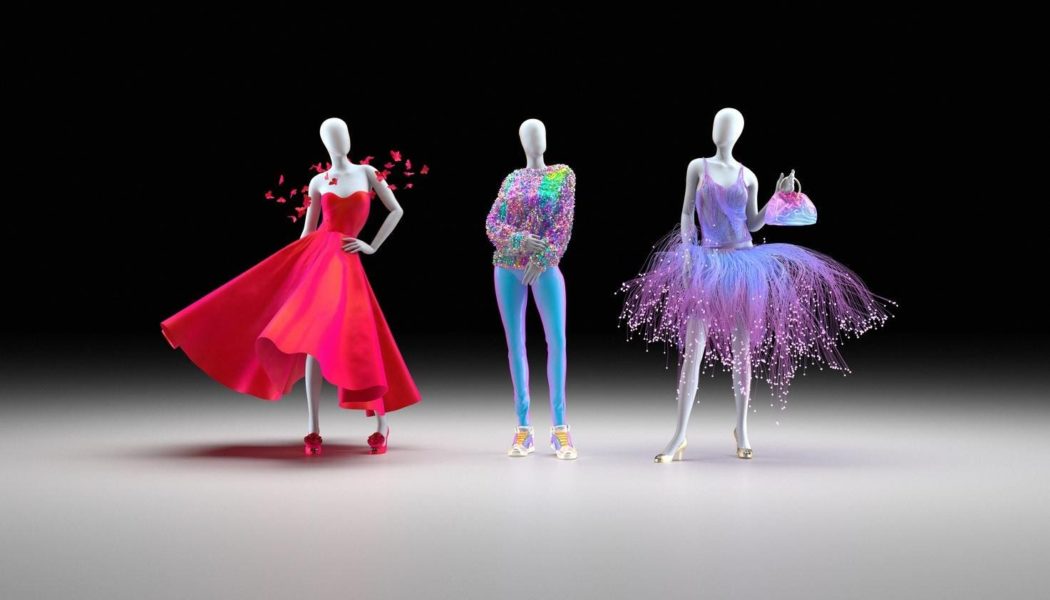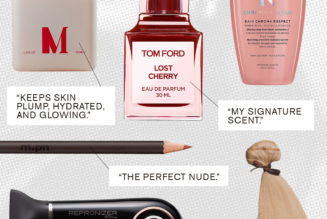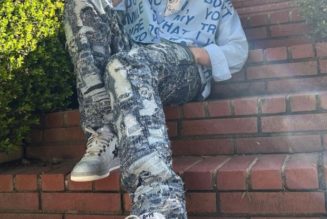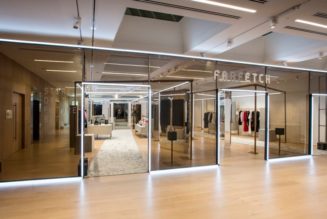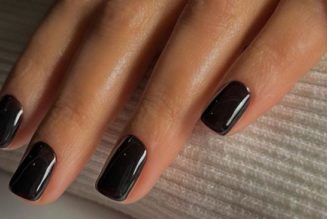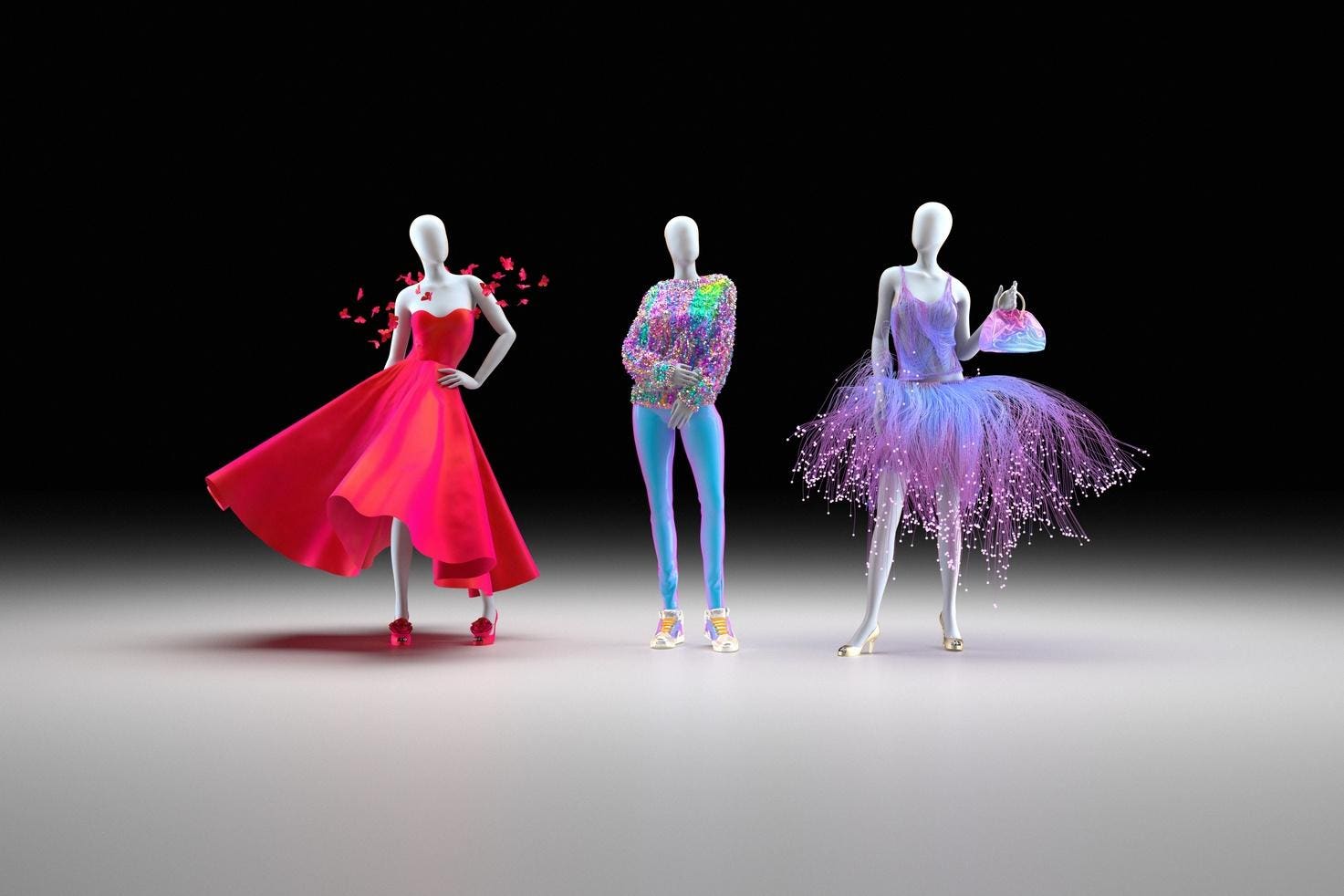
The impact of Apple’s new spatial computing device, the Apple Vision Pro, on the fashion, luxury, and retail industries shouldn’t be underestimated. Is the fashion industry ready for a shift in how we engage with technology?
At Apple’s WWDC, Tim Cook revealed the Vision Pro – a spatial computing headset focused on entertainment and communication. While the promo footage at WWDC showed entertainment value, it was also a pivotal moment for the future of fashion. The Vision Pro is a transition for fashion and luxury, both from a content and design perspective. The wearable device of the future will have to be a technological marvel firmly rooted in style. People will make a fashion choice to use the device or not and what it signals to others.
Change is inevitable. Change will come. Sometime in the future, something will replace either our mobile phones or our computers. Just how soon that future will happen remains to be seen. But when this future arrives, will the fashion industry be prepared for the post-smartphone era that’s accelerated by AR, VR, XR, and AI?
It Will Start As A Luxury And An Accessory
Apple’s new Vision Pro virtual reality headset is displayed during Apple’s Worldwide Developers … [+]
If you are a user of Apple hardware, take a second and think about how many Apple devices you have at home. Probably quite a bit from your phone, TV, headphones, watch, iPads, or even the laptop, you might be reading this on. The Vision Pro will start as a luxury accessory at first, one that will be focused primarily on developers but will eventually make a fashion statement when worn in public and will become sleeker and smaller over time. What that fashion statement is remains to be seen. No one wants to repeat things and be seen as the early 2000s “Glassholes” (remember Google Glass?).
As this potential future gets closer despite reduced numbers in the number of headsets that will be available in 2023, and as Apple introduced a new device and entered a new market segment, the fashion industry will need to prepare for an AI-driven future powered by XR devices. Enter the spatial computing era, where they will need to think in 3D, immersive experiences and ways of connecting their physical and virtual touchpoints. Despite the scaling back on the number of devices that will be available next year, I’m sure many of us will be willing to queue up in front of an Apple Store to get our hands one one of the first Apple Vision Pros, just like many have done in front of a Louis Vuitton store or during a Supreme drop.
For many in the tech industry, XR is becoming the interface for AI.
“Our interactions with AI will become a lot less about text and prompts and a lot more about spatial context,” said Ori Inbar, founder of Super Ventures and AWE, at the augmented reality and virtual reality industry event that happened recently.
Apple’s Tim Cook has said in the past that he believes that AR will change everything and has remained bullish on AR throughout the years. Before WWDC, he spoke with GQ about the future of Apple and while he didn’t confirm or deny any new products during that interview, he gladly spoke about the potential of a new device. He did mention that “the idea that you could overlay the physical world with things from the digital world could greatly enhance people’s communication, people’s connection. It could empower people to achieve things they couldn’t achieve before.”
More revealing than this latest interview are some of the things that Tim Cook has said about AR and in particular about its role in fashion in the past.
Some examples of what he’s said in the past include an interview he did with British Vogue in 2017. In the interview Cook said that he believes brands supporting AR will be as required as having a website, which in some ways was prescient since virtual try on is no longer a nice to have, it’s a must have for GenZ shoppers on social media shopping for makeup, jewelry, clothes, sneakers, shoes and beyond. Cook has openly talked about how he sees AR as a transformative technology that could change the way people shop for fashion and other products. By using AR, customers could try on clothes virtually, see how they look in different colors and styles, and get a better sense of how the clothes fit without having to physically try them on. Cook has also discussed how AR could be used to enhance the shopping experience more broadly. In a 2017 earnings call, he said that AR could be used to help customers make more informed purchasing decisions by providing them with more information about products. Apple’s ARKit, a well known platform for developers to create AR experiences for iOS devices is already used by many brands including Burberry and Gucci, and many more.
A Wearable World
The future of fashion will include AR, AI and Spatial computing.
So, if in fact, we are moving away from being heads down on mobile phones to being heads up on AR glasses or some type of wearable spatial computing device, what does this mean for fashion?
Fashion will play a key role not only in the design of what that wearable will be but also in how we use that device, why we use it, and most importantly how what we can see in and through it impacts what we wear or hear. Fashion will extend beyond wearable fabric to become alive through AR, AI and spatial computing. What we wear will become a combination of bits and atoms, a convergence of the metaverse concept and the “matterverse” of physical design. It will unlock new possibilities in how we experience fashion and how we use fashion for self-expression. This is how headsets like Apple’s Vision Pro will slowly start to impact culture, and yes fashion as well. If the world becomes both the canvas and the catwalk, and culture continues to impact fashion, what will what we wear say about us?
While the Apple Vision Pro is a rather complex device, with this complexity also comes Apple’s design aesthetic and design principles.
Through the use of sensors, computer vision, game engine technology, and machine learning, these wearables will mesh the world around us in order to understand it in real-time as we navigate the physical world. It will make what is within eyesight and earshot of a person become a further extension of their fashion choices, further connecting both virtual and physical touchpoints and extending fashion, making it contextually aware and unlocking fashion’s potential beyond just the physical garment. This in turn will have an impact not only on what we design but also on how we design, and who designs it.
A New Generation Of Designers
Three virtual fashion designs.
The signals all point to a new era for designers and also who can be a designer. With Pharrell assuming the creative direction of Louis Vuitton’s menswear and his record breaking, star-studded debut in Paris in June that included the pixelated gaming look, to startup Syky announcing the first cohort of designers of it’s one-of-a-kind virtual fashion incubator, to Epic and LVMH announcing a robust partnership during VivaTech, fashion, tech, and gaming have never been closer.
Fashion brands will need to recruit creative talent that combines both traditional fashion design training and know how to work with physical fabric and materials, but they mustn’t forget the up and coming designers that specialize in creating virtual and augmented fashion. The future of fashion includes both atoms and bits, and the houses that adapt and start to change the way they view the spatial computing era will stay ahead of the curve. Innovation shouldn’t just be done for innovation itself, but for cultural relevancy. Both fashion students, aspiring game and virtual fashion designers, brands, and universities must embrace change. Some of the ways we’re seeing traditional fashion embrace tech include initiative like the following:
- Polimoda launched a Fashion For Metaverse class last year.
- The Council of Fashion Designers of America (CFDA) launched its first virtual collective collection to celebrate its 60th anniversary with designers like Carolina Herrera, Tommy Hilfiger, Vivienne Tam, Willy Chavarria and more.
- Roblox partnered with Parsons to launch a course where students learn to use Roblox tools for fashion design, as well as launched a joint study.
- Florida International University recently announced the launch of their first endowed scholarship focused on virtual fashion design.
- And more.
So Where Does Fashion Go From Here?
The future wearable will be a technological marvel rooted in style.
Whether it is Apple’s spatial computer or a screenless wearable like the one proposed by startup Humane with their newly announced Ai Pin, what replaces the mobile phone or our computers will one day arrive. But one thing is certain, the fashion industry will be impacted by a move from mobile phones to some other type of wearable device.
Fashion has already been impacted by gaming in ways that many didn’t foresee. While it might take a few years for a new wearable to go mainstream, the use of tech like AI and AR makes it possible. Apple’s partnership with Unity for game and 3D objects design will be the watershed moment for many industries. One could wager that there might already be several Maisons working with Apple on creating demos for that future device when it arrives. Magic Leap worked with brands like Moschino when it launched its collaboration with H&M to bring a spatial computing experience to life and one of the experimental demos on the Magic Leap One was a fashion based 3D spatial computing experience showing how someone could shop for a wrap dress in real time.
As Apple’s Vision pro promises to change how we interact with the world, the fashion industry must continue adapting to the future of augmented and virtual style. The hope is that with the debut of this new type of wearable, it will propel the fashion industry to continue pushing the boundaries of creativity and imagination, just as the fashion industry has done so fabulously in the past. The post-smartphone era will hopefully enhance our human experience, with tech moving to the background.
In GQ, Cook also said, “If you do something that’s on the edge, it will always have skeptics.” I wonder how many people reading this are skeptics and how many others will read it and start to prepare for the future of fashion in a wearable world.
Written in collaboration with Lily Snyder.
